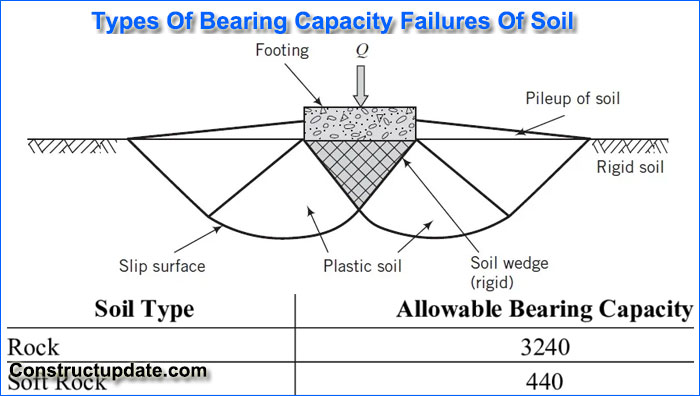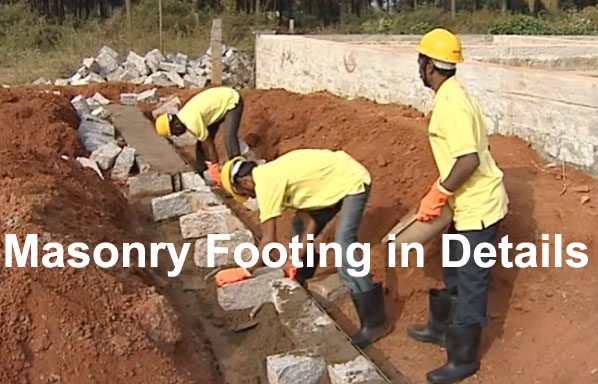Bearing capacity of soil and types of failures
The ability of soil to withstand loads applied to the ground above is known as bearing capacity. The main determinants are the soil type, shear strength, and density. It also depends on how deep the load is embedded; the higher the carrying capacity, the deeper the embedment.
To reduce applied stress to a value that is acceptable but lower than the bearing capacity in cases where there is insufficient bearing capacity, the ground can be upgraded or the load can be distributed over a greater area. This can be achieved, for example, with reinforced concrete spread foundations.
The highest load that soil can sustain without failing or settling too much is known as its bearing capacity. In civil engineering, it is crucial to take this into account while designing retaining walls, foundations, and other structures. A few examples of these variables are soil type, moisture content, foundation depth, and foundation shape.
The ability of soil to withstand loads placed upon it is referred to as its bearing capacity. It is affected by a number of variables, including the kind of soil, density, and foundation depth. The highest average pressure that the soil can sustain without failing or settling too much is known as the bearing capacity. To make sure the soil can withstand the greatest force without giving way, the safe bearing capacity is calculated by deducting a safety factor, usually between three and five, from the ultimate bearing capacity. Spreadsheet calculations for foundation planning use this value.

Types Of Bearing Capacity Failures
The soil’s shear strength beyond its bearing capacity results in a base failure. A breakdown in bearing capacity is what is meant by this. Soil bearing capacity breakdowns come in three different forms:
- General shear failure,
- Local shear failure, and
- Punching shear failure
General Shear Failure
- Soils with a shear stress curve of the Brittle type experience general shear failure. dense sand, silt, on top of solidified clay, etc.; that is, poor compressibility soil.
- The failure pattern in this instance is clearly defined, and there is an abrupt shear failure accompanied by the heaving (bulging) of the ground surface on both sides of the foundation. But the last slip moment will only happen on one side, and the foundation will tilt as a result.
- The state of plastic equilibrium is initially attained in the soil surrounding the footing and progressively spreads outward and downward as the pressure rises toward the final value.
- Finally, plastic equilibrium is reached in its entirety across the soil. Generally speaking, soil with a relative density of more than 70% has general shear failure.
Local Shear Failure
- There is significant soil compression beneath the footing in cases of local shear failure, and the state of plastic equilibrium has only partially developed.
- There is barely minor soil shifting near the foundation and the failure surface does not reach the ground surface.
- There is no tilting of the foundation.
- The load settlement curve does not clearly define ultimate bearing capacity.
- Failure in this instance is not abrupt.
- Usually happens in soil with a stress-strain curve that is rather malleable. For instance, loose sand with a relative density of 30–70%.
Punching Shear Failure
- When the soil beneath the footing is compressed relatively much, punching shear failure happens.
- Shearing around the footing’s edge in a vertical direction occurs concurrently with it.
- In this instance, there is no shifting of the soil around the footing.
- There is no foundation tilt.
- The term “ultimate bearing capacity” is vague.
- Usually takes place in extremely loose sand that has a relative density of less than 30%.
- Punching shear failure is typically observed in deep foundations and shallow foundations in loose sand.
- In this case, a sizable settlement is reached.




